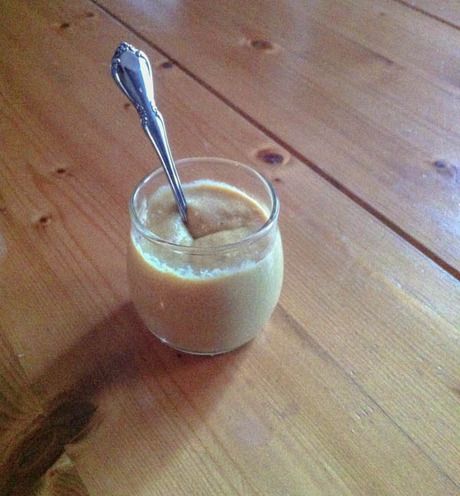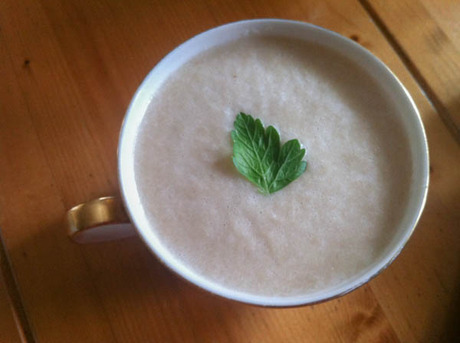Yesterday I made and canned Dijon mustard for the first time.
The project was inspired by being out of the storebought stuff for the past month and toying with making my own each time I found myself in the condiment aisle. I know it can be as simple as adding liquid to dry mustard powder, but I thought there must be some hidden nuisance in mustard’ing. Well, I’m reporting back to say, nope.
My morning canning session yielded four sealed 4-oz jars and one little fridge jar (pictured below) of this sweet, tangy condiment. Had I been better about keeping the dishes under control, I could’ve claimed the whole ordeal took place before 9 a.m.
I used and tweaked slightly Kaela’s adaptation that is posted on Food in Jars. It’s a simple, straightforward recipe that doesn’t take much time at all.
What struck me about mustard making was not really the simplicity, but the opportunity to turn the by-product—vinegar and white wine soaked garlic and onions—into something else we might consume. My inner-depression era granny rises to the occasion when presented with a pile of anything moderately useful, any chance for turning trash into treasure; I’m in.
I opted for the route I usually travel with odds & ends of spare or wilty veg: soup!
It’s got some vinegar bite, which I happen to love. I’ve noted a few ideas for using the puree in other ways if it’s too tangy for your palate.
Tangy Onion Soup
yields ~1 quart
1. Melt a hunk of butter (as generous as you’re feeling) with about that much olive oil in a medium saucepan and throw in onion waste from Kaela’s mustard project. Salt and pepper them and cook until they begin to brown on the edges.
2. I added a pint jar’s worth of chicken stock, but veggie or any other stock you have will do. I added another cup of filtered water, too. Let simmer for 5 minutes and remove from heat.
3. Puree in a blender or food processor, salt and pepper to taste. (I didn’t do this, but you could thicken the soup by adding a tablespoon of cornstarch after you blend it if you prefer a thicker consistency.) I stirred in a splash of heavy cream to individual bowls and garnished with some parsley. You could jazz it up in all sorts of interesting ways, too: adding chopped fresh herbs, a few teaspoons of apple sauce, or topping with sunflower seeds and raisins.
If it’s too tangy for your liking (it has some zip!) then this might also be an excellent marinade for pork or chicken or a good base for a sauce.
Let me know if you decide to use the puree (or initial pile of onion scraps) in other ways and I’ll share it here!
- Dale in Denver suggested mincing and serving over tacos, since the onion is essentially quick pickled.
- I dropped the left over cups of soup into a saucepan and scooped in about a cup of leftover slowcooker beans and bits of pork shoulder, topped with parmesan cheese and cracked pepper. This was a. very. good. idea.

